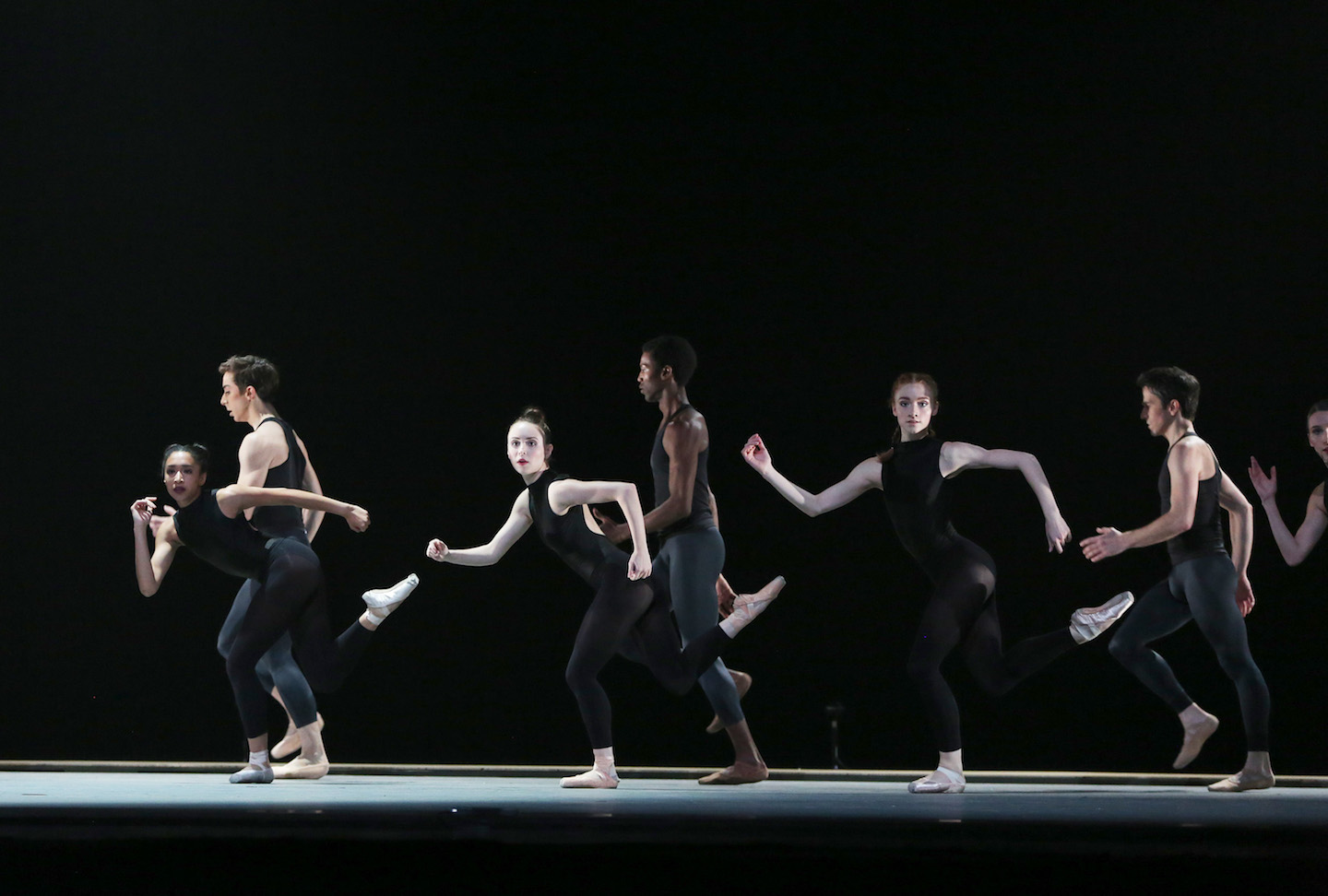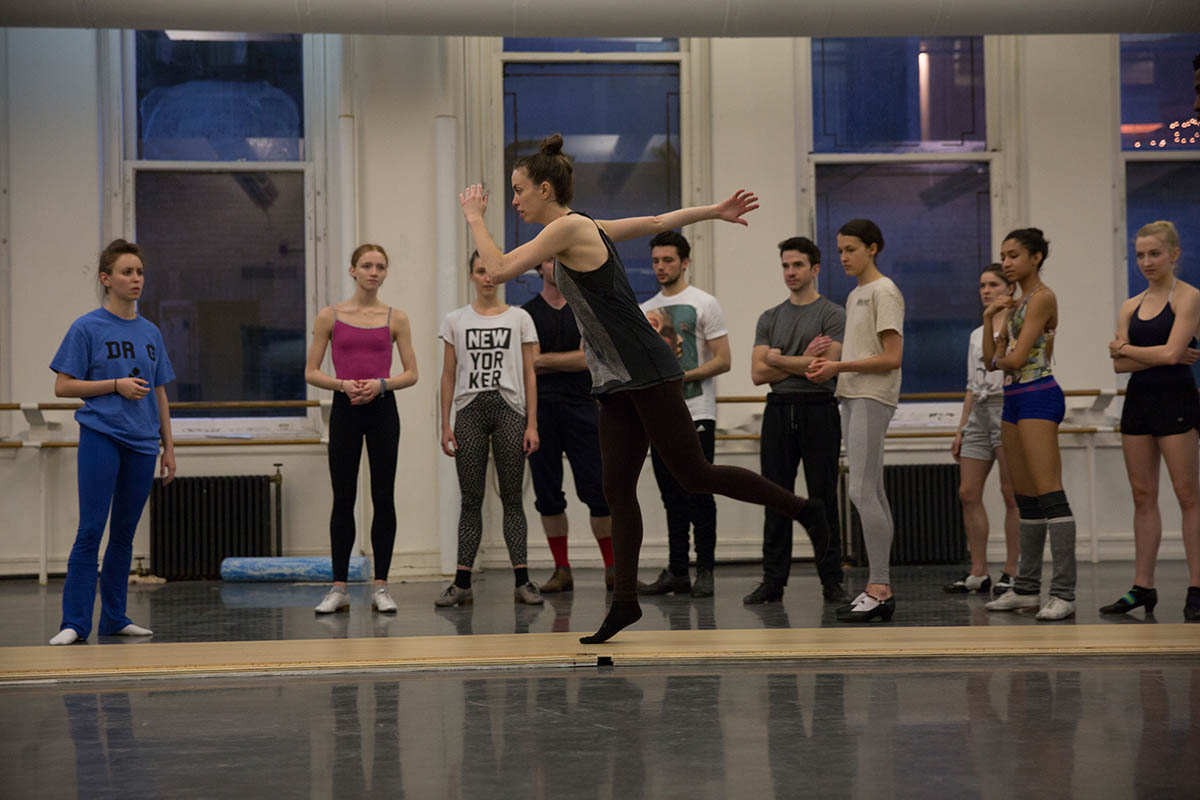Kevin McKenzie: Somewhere around 18 months ago, I ran into Michelle Dorrance, and I am such a fan of her work. As my 25th anniversary [as ABT Artistic Director] was approaching, somebody said, “What would you really like to do?” And I flippantly said, “I would love to see a bunch of our dancers tap.” And then, of course, the lightbulb went off.

Dorrance’s Praedicere. Photo: Marty Sohl. |
Michelle Dorrance: I knew you saw the disaster of a rehearsal we were in the middle of [Vail Dance Festival], and you could see potential in what was happening there. You had faith in a particular vision that you believed I could see through, so that was tremendously helpful. I’ve always gone to the ballet and listened for the sound of the pointe shoes, as much as that’s probably a thing you shouldn’t do…but I love it. The truth is, you guys are some of the best dancers in the world. The opportunity to work with not just dancers and physical beings like that, but the personalities behind these powerful, magnetic performers—I hope to create something with that power that will hopefully affect our culture in some way or audiences in some way.
KM: I must say I’ve been watching most of your rehearsals and creative process, and I’m really stunned and overwhelmed by your ability to get into somebody’s imagination. The effect on the dancers is kind of remarkable. Were there surprises to your expectations?
MD: I was pleasantly surprised when I first came [to choreograph at ABT] in the spring. I loved how much everyone was willing to play. I wasn’t sure if everyone in that room would be willing to play: I give you a rhythm and you have to improvise. It’s not something you’re called upon to do in the creative process of traditional ballet. I think it’s really important that everyone can experiment together. And I’m curious towards everyone’s personal meanings towards music or character and to let their natural leanings towards movement choices drive what I want to create. That’s a gift to me because, hopefully, it’s more of a collaborative process that we can continue to give each other in any future creative environment. Because if we’re not all constantly working towards learning, what are we doing?
KM: So why Duke Ellington?
MD: During the curtain call speech at the Spring gala, someone said, “This is an American tap dancer. Tap dance is an American art form, and this is American Ballet Theatre.” Then I realized what I could offer that is rooted in me and who I am, which is really jazz legacy. I thought, if I don’t create something in relation to that, then maybe I’ve missed my opportunity to do so. I also thought this is an opportunity to use music with such character and such cultural depth at an institution that has such American cultural importance. And your dream of ballet dancers actually tap dancing is happening! Every single dancer on stage will be responsible for something musical—it’s a dream.
 Michelle Dorrance in rehearsal. Photo: Rosalie O'Connor. Photo: Rosalie O'Connor.
Michelle Dorrance in rehearsal. Photo: Rosalie O'Connor. Photo: Rosalie O'Connor.
